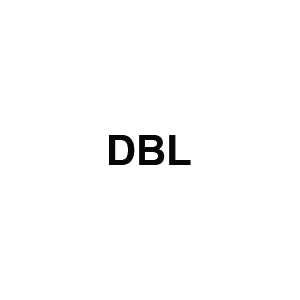Description
Introduction
In today’s data-driven world, NoSQL databases like MongoDB and Cassandra have become essential tools for data engineers. These databases are designed to handle large volumes of unstructured or semi-structured data with high availability, scalability, and performance, making them ideal for big data applications, real-time analytics, and high-velocity data processing.
This course is aimed at helping data engineers master the fundamentals and advanced techniques of MongoDB and Cassandra, two of the most popular NoSQL databases in the industry. By the end of the course, participants will be equipped with the knowledge and skills to design, implement, and optimize NoSQL solutions that can scale and perform under demanding workloads.
Prerequisites
- Basic knowledge of relational databases and SQL.
- Familiarity with programming languages such as Python or Java.
- Understanding of data engineering concepts, including data storage and pipeline design.
- Experience with cloud platforms (AWS, GCP, or Azure) is helpful but not mandatory.
Table of Contents
- Introduction to NoSQL Databases
1.1 What is NoSQL?
1.2 Types of NoSQL Databases: Document, Key-Value, Column-Family, and Graph
1.3 Why Choose NoSQL Over SQL for Data Engineering?
1.4 Benefits and Challenges of NoSQL Databases
1.5 Key Differences Between MongoDB, Cassandra, and Relational Databases - Understanding MongoDB
2.1 MongoDB Architecture and Data Model
2.2 Setting Up MongoDB: Installation and Configuration
2.3 MongoDB CRUD Operations
2.4 Indexing in MongoDB: Improving Query Performance
2.5 Aggregation Framework in MongoDB
2.6 Replication and Sharding in MongoDB for High Availability
2.7 Security Best Practices for MongoDB - MongoDB Performance Optimization
3.1 Profiling MongoDB Queries
3.2 Optimizing MongoDB Storage: Data Types, Compression, and Caching
3.3 Scaling MongoDB: Horizontal vs. Vertical Scaling
3.4 Query Optimization Techniques in MongoDB
3.5 Data Consistency and Durability in MongoDB - Working with Cassandra
4.1 Overview of Cassandra Architecture and Data Model
4.2 Setting Up Cassandra: Installation, Configuration, and Clustering
4.3 Cassandra Data Types and CQL (Cassandra Query Language)
4.4 Managing Cassandra Tables: Creating, Altering, and Deleting
4.5 Writing and Reading Data in Cassandra
4.6 Consistency Levels in Cassandra: Understanding QUORUM and ONE
4.7 Understanding Cassandra’s Distributed Nature: Nodes, Partitions, and Replicas - Cassandra Performance Optimization
5.1 Indexing in Cassandra: Local and Secondary Indexes
5.2 Optimizing Write and Read Operations in Cassandra
5.3 Data Compaction and SSTables in Cassandra
5.4 Scaling Cassandra for Big Data
5.5 Handling High Availability in Cassandra: Tuning Replication and Failover - Data Modeling in NoSQL Databases
6.1 Data Modeling in MongoDB: Designing Schemas for Flexibility and Efficiency
6.2 Best Practices for Data Modeling in MongoDB
6.3 Data Modeling in Cassandra: Designing for High Availability and Scalability
6.4 Understanding Denormalization and Query Optimization in Cassandra
6.5 Mapping Relational Data Models to NoSQL: Challenges and Strategies - Integrating NoSQL Databases with Data Pipelines
7.1 Using MongoDB and Cassandra in Data Engineering Pipelines
7.2 ETL Processes with NoSQL Databases
7.3 Streaming Data into MongoDB and Cassandra
7.4 Data Synchronization Across MongoDB and Cassandra Clusters
7.5 Handling Data Consistency in Distributed Systems - NoSQL Databases in the Cloud
8.1 Running MongoDB and Cassandra on Cloud Platforms (AWS, GCP, Azure)
8.2 Cloud Managed Services for MongoDB: Atlas, MongoDB Cloud
8.3 Cloud Managed Services for Cassandra: DataStax Astra
8.4 Scaling NoSQL Databases in the Cloud: Auto-Scaling and Load Balancing
8.5 Monitoring and Maintaining Cloud-Based NoSQL Databases - Data Security and Governance in NoSQL
9.1 Security Features in MongoDB: Authentication, Authorization, and Encryption
9.2 Securing Cassandra Clusters: SSL, Kerberos, and Audit Logs
9.3 Data Privacy and Compliance: GDPR, HIPAA, and Other Regulations
9.4 Backup and Restore Strategies for NoSQL Databases
9.5 Monitoring and Auditing NoSQL Databases for Security - Advanced Use Cases for MongoDB and Cassandra
10.1 Real-Time Analytics with MongoDB
10.2 Time-Series Data Management with Cassandra
10.3 Integrating MongoDB and Cassandra with Big Data Platforms: Hadoop, Spark
10.4 Leveraging NoSQL for Machine Learning and AI Applications
10.5 Case Study: Building Scalable Data Pipelines with MongoDB and Cassandra
Conclusion
Mastering MongoDB and Cassandra opens up new possibilities for data engineers to handle complex, high-volume data environments. These NoSQL databases are particularly suited for real-time applications, large-scale data processing, and building highly available, scalable systems. This course equips data engineers with the skills needed to efficiently manage, optimize, and scale NoSQL solutions, ensuring that both MongoDB and Cassandra can be used to meet the demands of modern data engineering projects.
By learning the intricacies of these NoSQL databases, you’ll be able to design and implement systems capable of supporting fast, high-availability data solutions in a variety of industries. Whether working on real-time analytics, large-scale data processing, or machine learning workflows, the skills gained here will ensure you’re prepared to tackle the challenges of modern data engineering.







Reviews
There are no reviews yet.